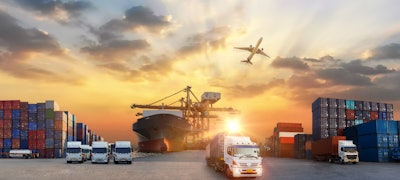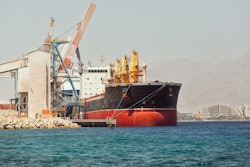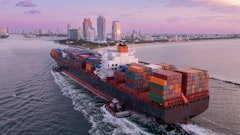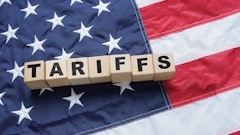
In an increasingly interconnected world, government policies wield significant influence over supply chain dynamics. Recent shifts in trade regulations, environmental standards, labor laws and technological investments have triggered profound changes in how goods and services are produced, distributed and consumed. As businesses navigate this evolving landscape, understanding the implications of these policies becomes essential for organizations to maintain a competitive advantage and ensure resilience in the face of disruptions.
The Impact of Trade Regulations
Trade policies have always been a crucial factor in shaping supply chains. Since the pandemic and even over the past few years, we have witnessed significant changes, including tariffs, trade agreements and export controls. For instance, the enforcement of tariffs on certain imports can prompt companies to reevaluate their sourcing strategies. Businesses that once relied on overseas suppliers may explore domestic alternatives to mitigate cost increases and supply chain vulnerabilities.
Trade policies also shape supply chains by influencing where goods are produced and how they are transported. Tariffs and trade agreements can alter sourcing strategies, pushing companies to diversify suppliers or relocate production to avoid extra costs. This was particularly evident during the COVID-19 pandemic, where many firms reassessed their dependency on single-source suppliers in high-risk regions, prompting a more distributed supply chain model.
The potential for new tariffs under Donald Trump’s presidency has raised concerns across the furniture industry, though many believe it is too early to predict the full impact. Proposed tariffs, including up to 100% on Chinese imports and 25% on Mexican imports, have sparked criticism from economists and retail groups who argue such measures could lead to higher inflation and increased costs for consumers. While suppliers acknowledge the potential challenges, most are taking a cautious approach, monitoring developments and considering contingency plans as details become clearer.
Global Disruptions Increase the Call for Agility
Events such as the COVID-19 pandemic and the Baltimore bridge accident have highlighted the fragility of supply chains. Government responses to such crises, including stimulus packages and emergency regulations, can either mitigate or exacerbate supply chain disruptions. The pandemic, for instance, revealed the vulnerabilities of reliance on single-source suppliers and highlighted the importance of diversification.
In response, businesses are rethinking their supply chain strategies, focusing on building resilience through diversification and localization. Governments can play a pivotal role by facilitating trade and supporting industries affected by disruptions, ultimately shaping a more robust supply chain landscape.
A Push for Sustainability
As concerns about climate change intensify, governments are implementing stricter environmental regulations. Policies aimed at reducing carbon emissions, promoting sustainable practices, and encouraging renewable energy use are becoming commonplace. These regulations compel businesses to rethink their supply chain strategies, emphasizing sustainability as a core value.
For instance, the European Union’s Green Deal aims to make Europe the first climate-neutral continent by 2050, affecting industries from transportation to agriculture. Companies must now consider the environmental impact of their supply chains, often leading to increased investment in green technologies and practices. This shift not only aligns with regulatory requirements but also meets consumer demand for sustainable products, ultimately reshaping market dynamics.
Economic Incentives
Governments often use economic incentives, such as tax breaks or grants, to promote specific industries or technologies. For example, investments in infrastructure can streamline transportation networks, reducing shipping times and costs. Companies that take advantage of these incentives can gain a competitive edge, leading to shifts in supply chain strategies as firms align their operations with government initiatives.
Furthermore, policies aimed at supporting domestic manufacturing can encourage companies to invest locally, which can lead to shorter supply chains and increased resilience against global disruptions. As seen in recent years, localizing production not only mitigates risks but also enhances the ability to respond to market demands more swiftly.
Technological Investments Pave the Way
Government policies promoting technological innovation are reshaping supply chains at an unprecedented pace. Technological advancements facilitate real-time tracking, improved forecasting and enhanced collaboration across supply chain partners. Companies that embrace these innovations can achieve greater transparency and agility, allowing them to respond swiftly to market changes and disruptions. Moreover, policies encouraging digital transformation can bridge gaps in supply chains, fostering resilience against unforeseen challenges.
In an era where technology is rapidly evolving, government policies that support digital transformation can reshape supply chains dramatically. Investments in technology, such as automation, artificial intelligence and blockchain, can enhance transparency, improve inventory management, and optimize logistics.
Policies promoting research and development in these areas enable companies to leverage advanced technologies, transforming traditional supply chains into agile, data-driven networks.
Global Cooperation and Challenges
As supply chains become more complex, international cooperation becomes increasingly important. Policies fostering collaboration among nations can lead to smoother cross-border trade and shared standards, making it easier for companies to navigate diverse regulatory environments. However, geopolitical tensions can disrupt these dynamics, prompting governments to enact protectionist policies that complicate international trade and supply chain operations.
As governments continue to adapt their policies in response to evolving global challenges, businesses must remain agile and proactive. The dynamic between government regulations and supply chain dynamics will only intensify, necessitating a keen understanding of how these policies affect operations.
Companies that stay ahead of regulatory changes, invest in sustainable practices, embrace technological advancements, and prioritize ethical labor practices will be better positioned to thrive in this new environment. The ability to pivot and innovate in response to shifting government policies will be a defining characteristic of successful organizations in the years to come.




















